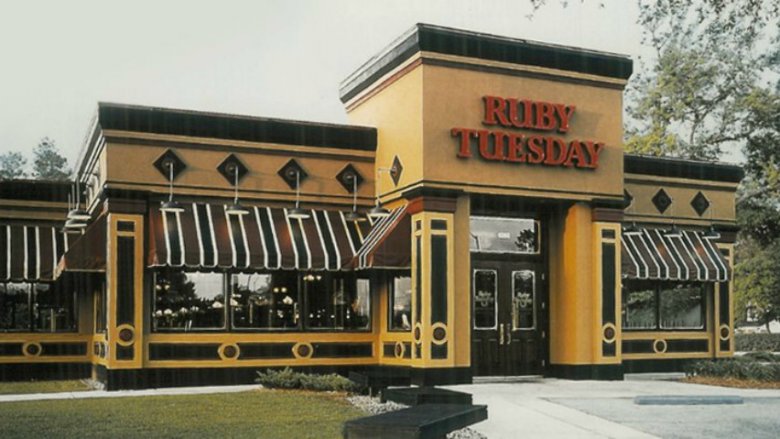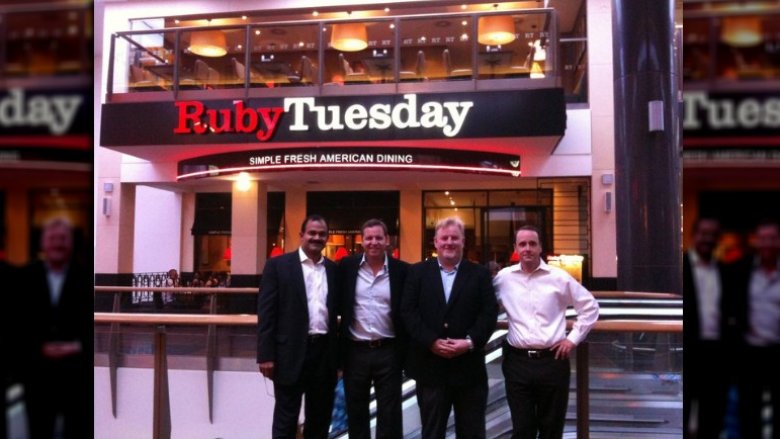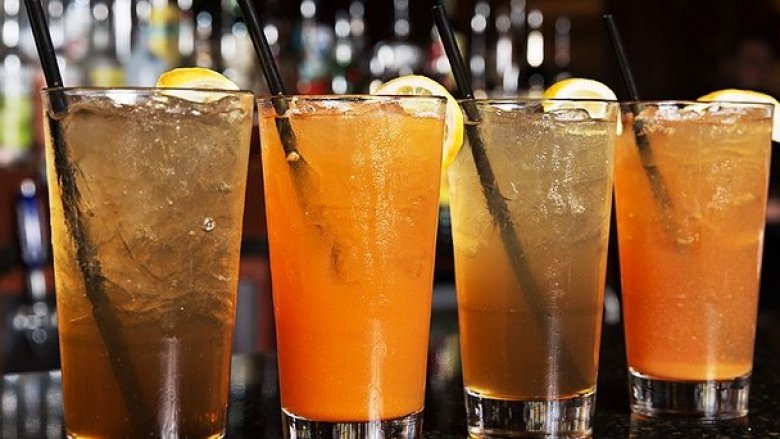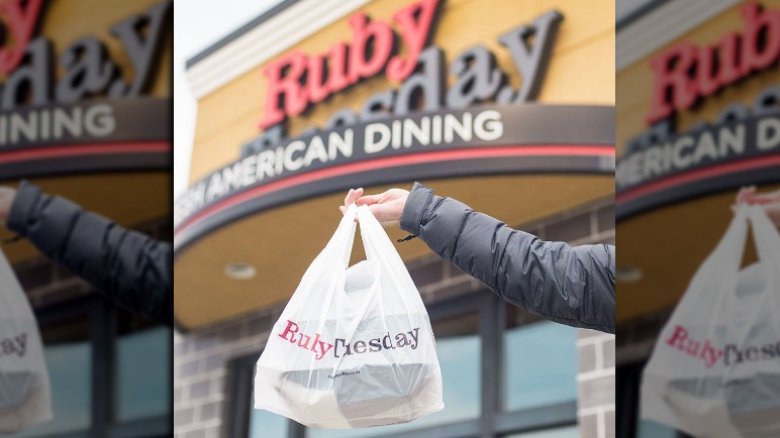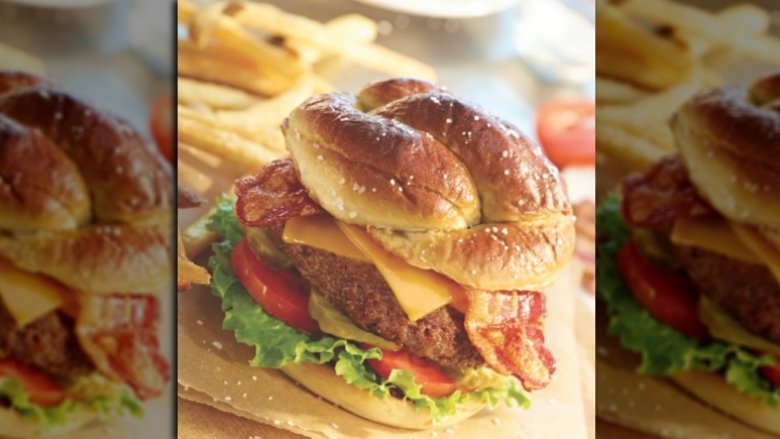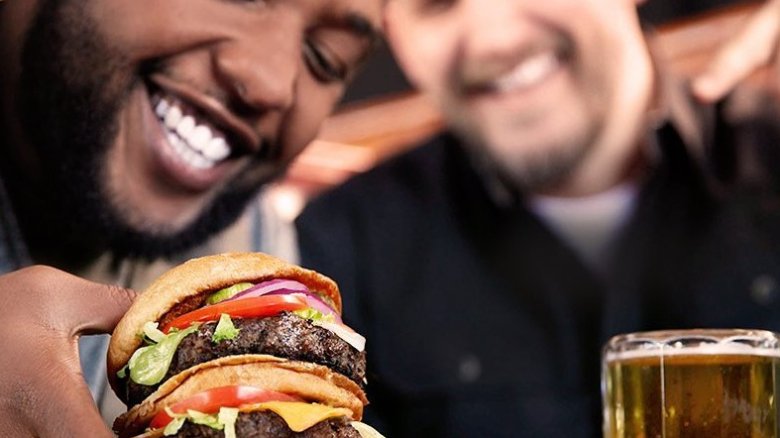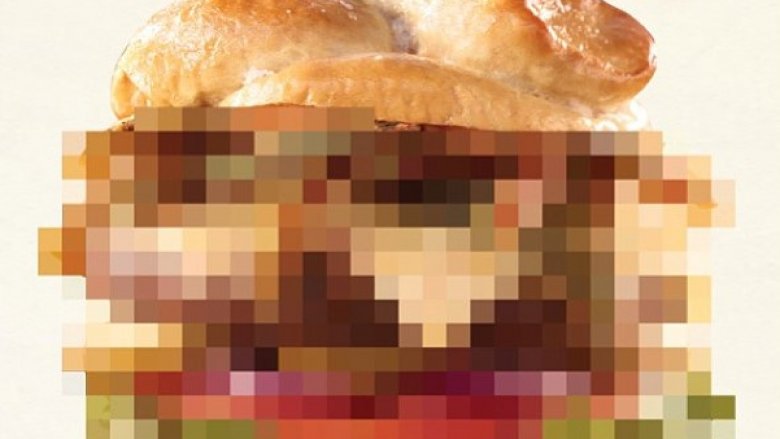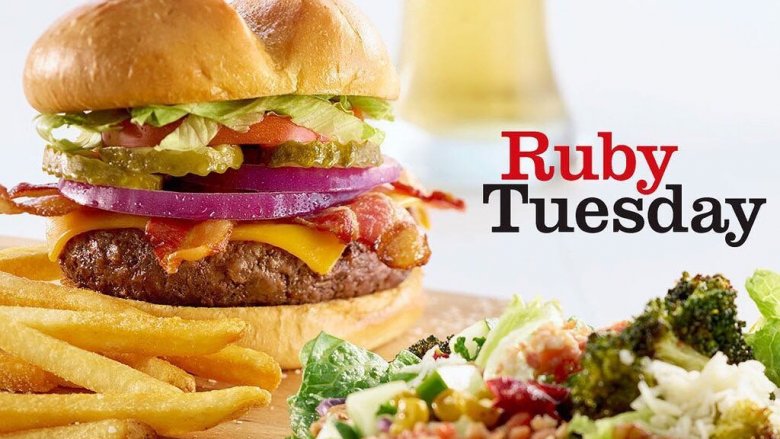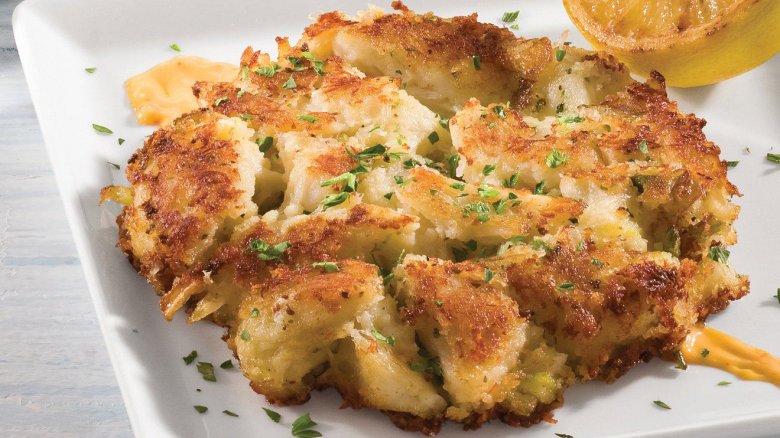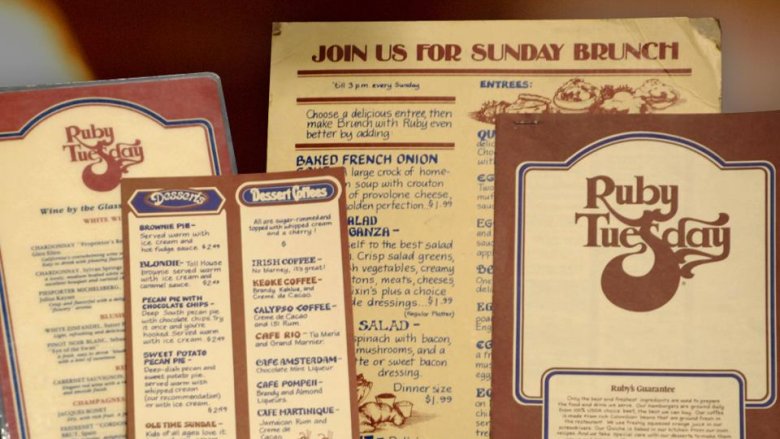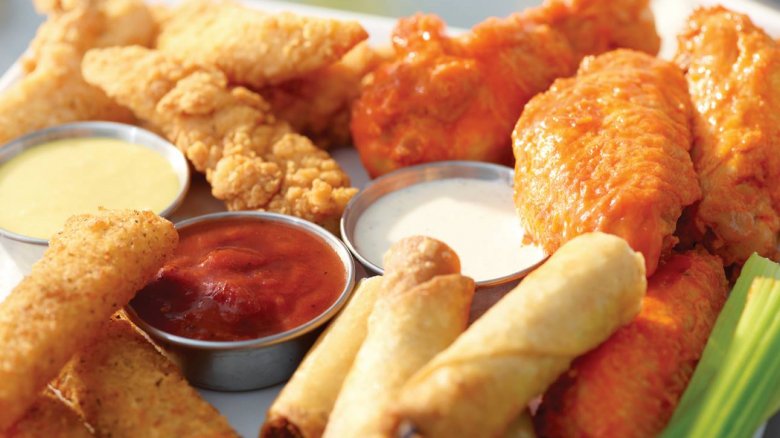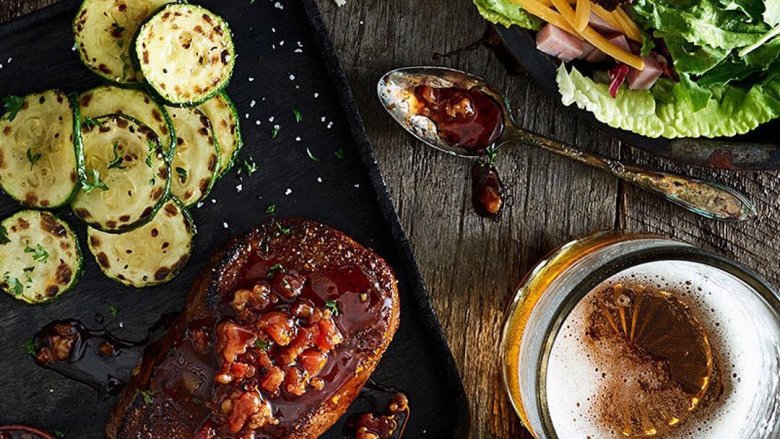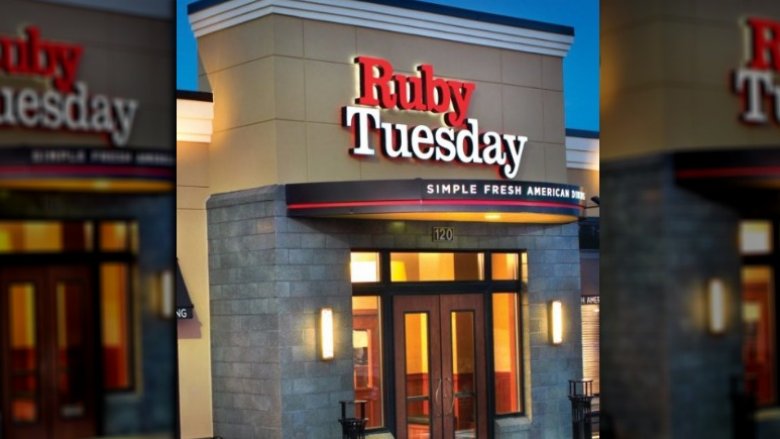The Real Reason Ruby Tuesday Is Disappearing Across The Country
Remember Ruby Tuesday? Chances are good that you do, and they're equally good you haven't been there in a while. You're not the only one, and in fact, so many people are giving this long-time staple of America's casual dining landscape a miss that they're struggling.
They're really, really struggling. Once, Ruby Tuesday was a bit of a destination. They were a common sight in shopping malls, they were the place you went to for a bite and a drink after heading out shopping. Now, not so much. The chain's trouble started way back in 2007, says Restaurant Business, and since then they've gone from 945 locations to just 544 in 2018. That means they've closed about 400 stores, and that's a lot of empty buildings and lost jobs.
Their numbers have continued to decline, and while they were sold to a private-equity firm in December 2017, time will tell if they can overcome all the problems facing them today.
Shopping malls aren't cool anymore
Watch any '90s coming-of-age flick, and you know where all the cool kids hung out: the mall. But today, it's better to shop online, have stuff delivered to your door, and go spend your time elsewhere. That's led to such a decline in shopping mall traffic that The Wall Street Journal took a look at "The Slow Death of the American Mall" in 2017, and say the decline is so bad it's left anchor stores and restaurants fighting for survival. Ruby Tuesday made their list of mall restaurants with the biggest drop in locations, and according to USA Today, what was once a blessing is now a curse.
At the height of mall popularity, a location there was coveted and profitable. There was a steady stream of customers walking by, and it was easy for them to stop in and grab a bite. Now, no one's walking by, and no one's going to make a special trip to park in a mall parking lot and walk in, especially if they have to walk through the mall itself to get there. People moved on from malls, and they also moved on from Ruby Tuesday.
It's not a good time for the bar-and-grill format
The 21st century isn't a good time to be a chain restaurant, and it's definitely not a good time to be a bar-and-grill sort of restaurant.
Ruby Tuesday's problems here are twofold, and they're working against a sort of double whammy. USA Today says chain restaurants like Ruby Tuesday definitely aren't attracting customers who are looking to support a local, one-of-a-kind restaurant where there's always something new on the menu. Why go get the same old, when you can go support a local place that's always got something fresh, seasonal, and ultra-local on the menu?
Bar-and-grill style restaurants have been particularly hard hit by the nation's shift in dining trends, says Nation's Restaurant News, and that's because these places rely on people sitting down, staying, eating, and investing a few hours into food and drinks. People just aren't doing that any more, and even if these places try to push their takeout and delivery options, they're not selling some of their highest-margin items: drinks. It's a lose-lose situation.
It's the littlest sibling
Ruby Tuesday has been around since 1972, when they were founded and named for a Rolling Stones song.
According to Nation's Restaurant News, the chain's heyday was in the late 1990s and early 2000s, but it was all downhill from there. When corporate announced they would be selling in spring 2017, they were the smallest of the struggling bar-and-grill, casual dining chains. And that's a problem for them, as they lacked the nationwide name recognition that competitors like Applebee's, TGI Fridays, and Chili's all had going for them.
Even those competitors are struggling, but Ruby Tuesday's small size means they felt it more. They're the little guy struggling for air on a sinking ship, and when they started feeling the profits sink, that made them less resilient, less competitive, and less able to even find good employees.
New menu items didn't impress like they hoped
Ruby Tuesday has tried all kinds of things to lure customers back in their doors, but some of their new menu items just failed to impress. In 2013, they put out their biggest new menu rollout in seven years. It included something that seemed like it would be a win: burgers on pretzel buns. There were other new items, too — as well as a pretty sizable marketing campaign — and it didn't go as planned. Sales still dropped, despite those efforts.
President-CEO James J Buettgen said (via Huffington Post), "[the results were] disappointing and did not reflect where we believe we can take the business as we execute our repositioning strategy."
Corporate went on to stress that they made sure diners were given lower-priced options that would make going out to Ruby Tuesday more affordable for the family, but they still hadn't seen the increase in profits they'd expected. They had more new menu items in the works, and when AOL looked at the state of Ruby Tuesday in 2015, they noted there had been a brief period of rising sales. They didn't rise enough, though.
People just aren't going there
After Ruby Tuesday's new menu failed to impress in 2013, financial analysts did a little more pushing to find out what the problem was (via Huffington Post). Their revised business strategy had been more affordably priced items that would attract more people and ultimately make them more money, but CFO Michael O. Moore shared some telling numbers. The overwhelming majority of the 11.4 percent sales drop they were seeing came not because people were buying less, but because they weren't even coming in the door. It wasn't just that people were splitting an appetizer and a few drinks between four people, it was because they were looking at a 10.5 percent guest-count decline.
They added that they had learned from that disappointment, and would be rolling out new menu items at a variety of price points. That might bring higher check totals from the customers they have, but they needed to do something more to get people in the door.
Representatives from Ruby Tuesday seemed to understand it was the guest experience that was lacking, saying they would be making changes to things like decor, music, and lighting, to attract a bigger crowd. They were also planning to overhaul the service platform to "enable[s] team members to share their personality and passion for our brand by connecting with guests in a more natural and genuine manner."
Cringey marketing campaigns
Marketing campaigns are the face of a business, and when they're good, they can be game-changers. When they're bad, though, they can turn people off from a product and a brand forever. Ruby Tuesday has had some big-time misses when it comes to their campaigns, like the 2013 campaign they launched around their pretzels buns.
According to Business Insider, they decided to go with the dubious #FunBetweenTheBuns. Couple the hashtag with pixelated photos of the burgers, some mood music, and sexy voiceovers, and they had customers wondering what the heck was going on in the kitchen and who was touching their food. Social media response was mixed, with some unhappy people saying that's not how anyone, anywhere wanted to think about their food, and Ruby Tuesday didn't back down. They stuck by their hashtag, and some people weren't impressed by their fun or their buns.
Earlier, in 2008, they had confused countless viewers by promising to live broadcast their demolition of the last "old" Ruby Tuesdays, but instead accidentally took out the competition next door when the cameras rolled. Just imagine the eye rolling that followed that broadcast! They added insult to injury by sending out a mass email explaining it had been a joke... to people who, says Stereogum, already understood (and were not impressed by) the "joke." Yikes.
Bad timing
Ruby Tuesday knew they had to do something to rebrand themselves and get customers coming back, but when they did, they did it with shockingly bad timing.
Food Business News says their efforts at rebranding themselves into a more upscale establishment than casual chain started in the mid-2000s. They wanted to attract higher-end customers who were going to spend more, and not only did that not happen, but they managed to alienate their loyal customer base. Those customers didn't like the new look, or the new price point reflected in their bill, and they definitely didn't like the menu overhaul.
By 2013, they were trying it again. This time, they wanted to keep the upscale feel, lower the price point, and be relevant for everyone. Unfortunately, the damage had been done. AOL says they went upscale as the economy went downhill, and got pushed so far off the radar they just weren't going to be coming back for a lot of people.
They mishandled a customer's death
In 2008, Fox News reported Ruby Tuesday had been the site of a tragic mistake. A 35-year-old man was dead after eating a dish containing shellfish. According to the Georgia Bureau of Investigation, he had ordered a chicken dish but was given the wrong meal. The plate he was served contained crab, and he went into anaphylactic shock after eating it.
Ruby Tuesday could have handled it in a number of ways, but they picked the very worst: blaming the customer for his own death. Their official statement to the family included (via Adage) condolences and a disclaimer: "We are aware and very sensitive to the fact that some of our guests have allergies to certain foods, and our menus clearly describe the content of the dishes we serve."
Needless to say, it didn't go over well. Customers took to social media to condemn Ruby Tuesday's response to the tragedy, with the victim's widow saying she hoped the company would own up to their mistake and make sure it never happened again.
People are tightening the purse strings
In March 2017 — the same time Ruby Tuesday announced (via USA Today) that they were going up for sale — Nation's Restaurant News looked at just what was wrong with the restaurant industry. They cited a survey that asked potential customers how often they went out to eat, and only 13 percent said they were dining out more than ever. Another response was more telling: 46 percent said they had little or no discretionary income, despite that fact that the national income was rising and unemployment was falling.
And that ties into Ruby Tuesday and their plans to get customers back in the door. They're not only competing with other chain and local restaurants, they're also competing with what people can make at home. And with increasingly low price points at supermarkets like Aldi, that's not easy to compete with. All that means they have a pretty insurmountable challenge ahead of them.
Millennials are changing the dining landscape
Millennials get blamed for a lot, and sometimes that's not justified. But no one can deny they're changing the way the nation eats, and it's coming at the expense of places like Ruby Tuesday. According to Business Insider, a huge part of Ruby Tuesday's problem is that they've failed to impress the millennial generation like they impressed their parents.
While Gen-Xers and the Baby Boomers looked at going out to eat as something of a celebration, millennials are more interested in having their get-togethers at home. They're more likely to cook at home than other generations, and when they do go out, it tends to be a quick stop on the way to something else — not the destination itself. This means they prefer fast-casual chains like Panera and Chipotle, where they can get in, get out, and get on to the next thing in a hurry.
Sneakily unhealthy food
Many of today's consumers are super-aware of what they're eating, what it's going to do to their waistline and their health, and how bloated and uncomfortable they're going to feel when they walk out to the car. While Ruby Tuesday does have Fit & Trim options, they also have some deceptively horrible menu choices.
Seafood is always a good choice, right? Order their Crispy Shrimp Platter and you're talking about 1422 calories and 82 grams of fat. They don't make it easy to find, either: you'll need to navigate their strange and not-user-friendly nutritional calculator.
Ruby Tuesday has also made some unflattering lists, like CBS News's Burger Breakdown. They made it with the "Worst healthy-sounding burger," and their Turkey Avocado Burger got the honors. Everything about that sounds healthy, right? But it comes with 878 calories, 54 grams of fat, and a shocking 2441 mg of sodium. That's more than the American Heart Association recommends you eat in a day, so it's no wonder people are a little suspicious of just how bad these meals are for you. If the healthiest-sounding ones are terrible, is it a surprise people are giving the whole lot a miss?
Inconsistent leadership
Success — or failure — starts at the top, and Ruby Tuesday has been at the mercy of some seriously inconsistent leadership.
That starts with James "JJ" Buettgen, who took over as CEO in 2012. According to USA Today, he resigned suddenly in September 2016. The chain — and Buettgen — didn't give a reason, but they assigned F. Lane Cardwell, Jr. as interim president and CEO, and it wasn't a stretch. Cardwell had been on the board, and he was also the former president of P.F. Chang's.
In April 2017, Cardwell was out in favor of a new CEO, Jim Hyatt. According to Nation's Restaurant News, he had the experience to back up his appointment: he was the former CEO of Church's Chicken. But his stint as CEO was short-lived, and by December 2017 the company was sold and he was replaced with Aziz Hashim, the founder and managing partner of the company that purchased Ruby Tuesday, NRD Capital (via Knox News). That many CEOs in such a short time makes it impossible for a company to find their groove and get a concrete plan developed and implemented. Just what is going to happen to Ruby Tuesday next is anyone's guess.
